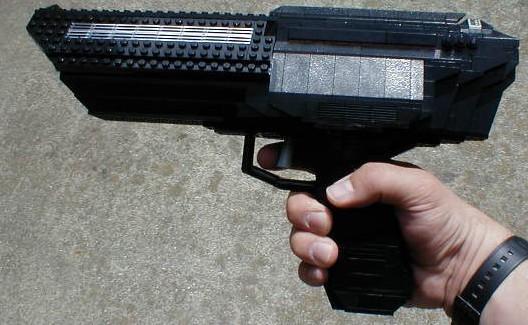
This was the first time I'd tried to build a full-scale prop of any kind, and I was quite pleased with the result. However, I had to commit to a major rebuild after I realized that the grip was not structurally sound at all. I used a couple 1x16 Technic beams vertically inside the handle running up into the body. You can shake this baby pretty hard and it won't fly apart.
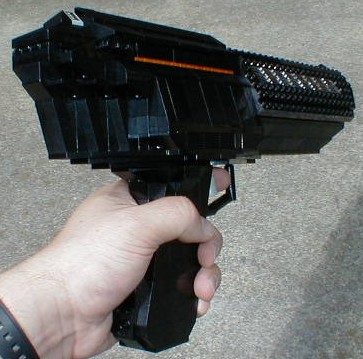
In this first version I used 1x1 trans-orange "headlight" bricks incorporated into the body on both sides with lots of 1x2 and 1x4 light bricks in-between that were set to flash. I then covered over the trans-orange bricks with tile plates to block most of their surface. When the power switch at the top rear of the model is activated, the lights flash and the thin orange strip gives off a pulsating effect. With the power on, the trigger can be engaged. I used one of the 2x6 electronic switches from the Technic Space Shuttle to achieve realistic trigger action (which was quite an engineering challenge for a Technic greenhorn like me!). When the trigger is depressed, the fiberoptics do their thing (scroll down to the bottom of the page for the video!).
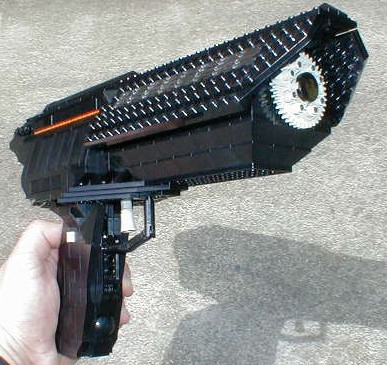
The barrel consumed most of my design time. I wanted to able to utilize all eight fiberoptic strands and the only piece I had that would accomodate all eight in a circular fashion was an old 40-tooth gear. Positioning the gear so that all the strands would reach and the gear would still be structurally sound was another big Technic challenge. I envisioned the 1x1 gray tiles on either side of the grip as a very special sensory device so that the weapon cannot be fired by anyone except the registered user.
U.E.C. "Space Eagle" A2
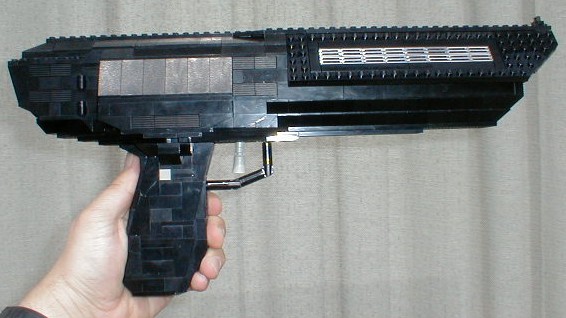
After finishing this website and getting it online I was inspired (and now had the free time) to try gearing up the fiberoptic mini-motor. That proved impossible since the mini-motor did not have the torque to move multiple gears. I had to defer to the larger Technic motor and gear it down. I also had to abandon the trans-orange bricks and their pulsating effect because the 9V battery could not supply sufficient power for the fiberoptics, the motor, and the lights at the same time. Additionally, keeping the trans-orange strip would have meant sacrificing an easily accessible battery box (and after repeated, nail-bending teardowns, I was not going without that!).
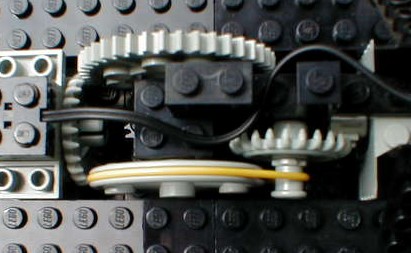
Here's an overhead close-up of the gear transfers. I doubted that it was going to be possible to gear down such a fast motor in a small space, but I managed to pull it off. Many Technic veterans may look on this arrangement as elementary, but since I've done very little work with gears, I was ecstatic that I was able to achieve my objective on the first attempt, especially given my very limited Technic experience.
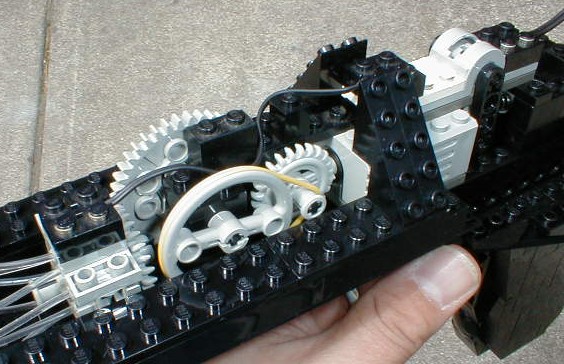
Here is a better view of the geardown. I knew I was going to have to use a 40 tooth gear somewhere, but I suddenly realized I could also use the large wheel and rubber band system as well. Another elementary Technic arrangement that I had never utilized before. You can also see the 2x6 Space Shuttle switch that serves as the trigger.
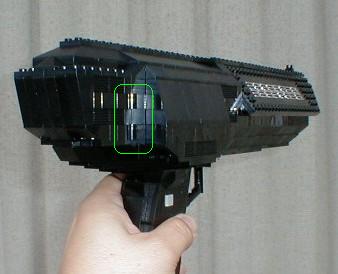
It can be quite frustrating trying to capture decent pictures of all-black models, and this photo shows why. Even with a flash in broad daylight, the details are still muddy. However, you can make out the hinge bricks at the rear (outlined in green) that open to provide access to the 9V battery box.
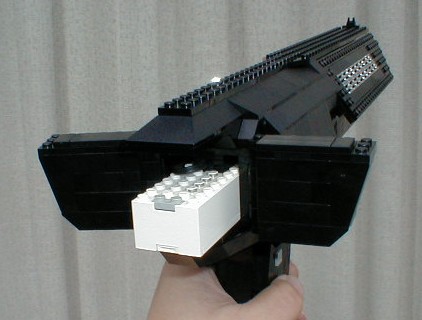
I had to make the 9V battery box easily accessible since I don't plan to take this model apart any time in the near future and I don't want the battery to "barf" all over the inside of the box and destroy the contacts while the model's in storage.
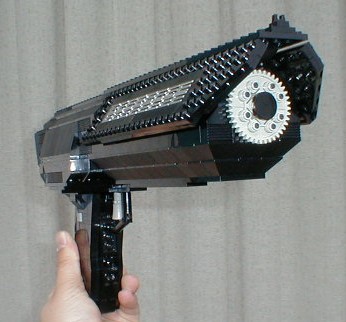
I embellished the barrel with a bevy of 1x2 chrome tiles with an outline of tile plates. I like the impression it gives of a high-powered weapon that needs proper cooling.
U.E.C. "Space Eagle" A3
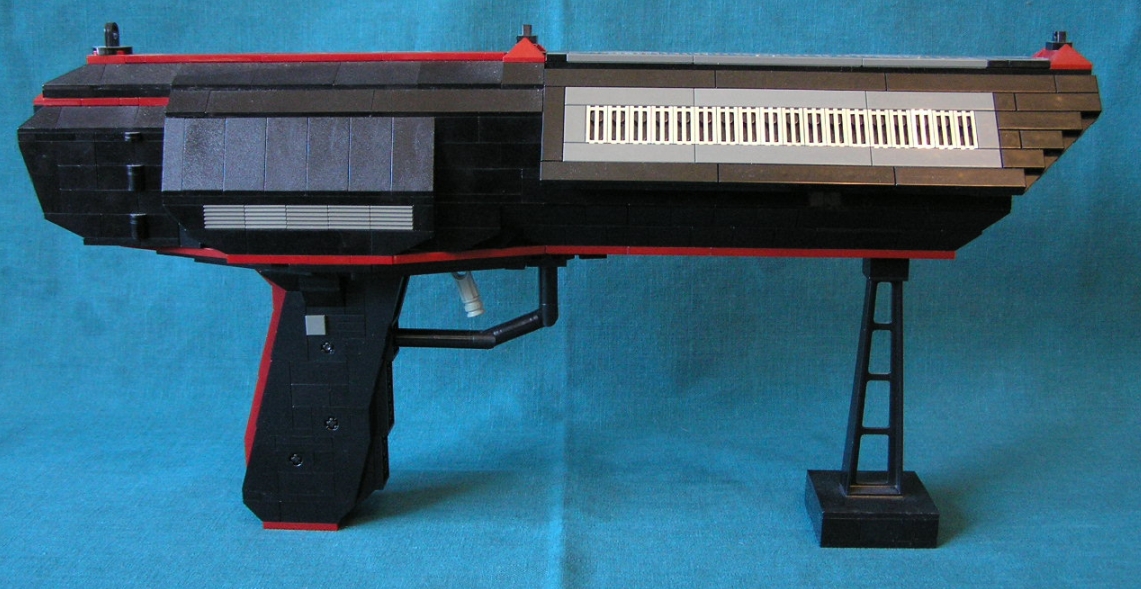
After I finished the E.O.N., I decided to tweak the color scheme of the Space Eagle to make it seem like it came from the same company. Thankfully, no major structural changes were necessary!
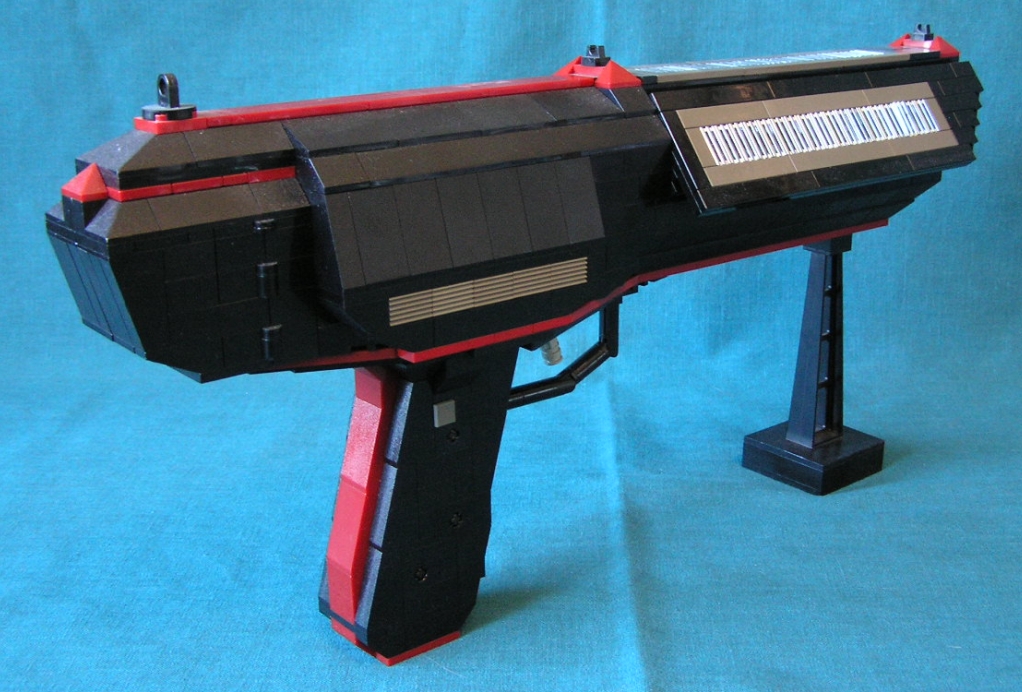
I'm very pleased with how the dark red highlights help to define the shape of the weapon in a much stronger way.
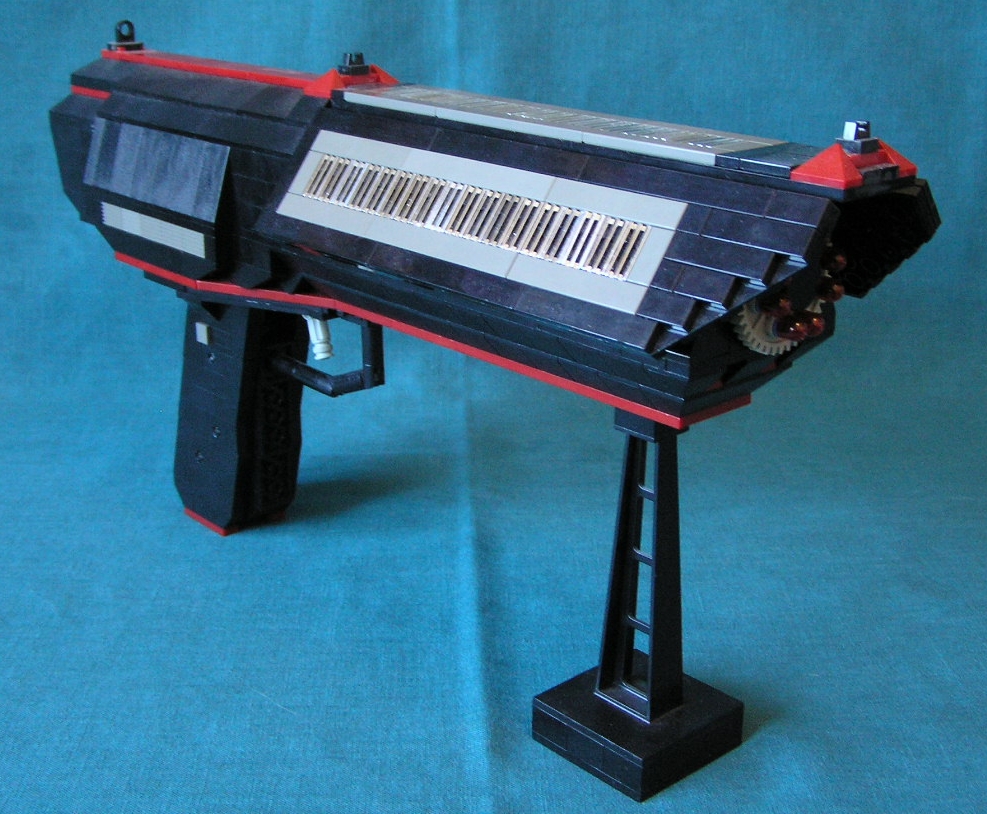
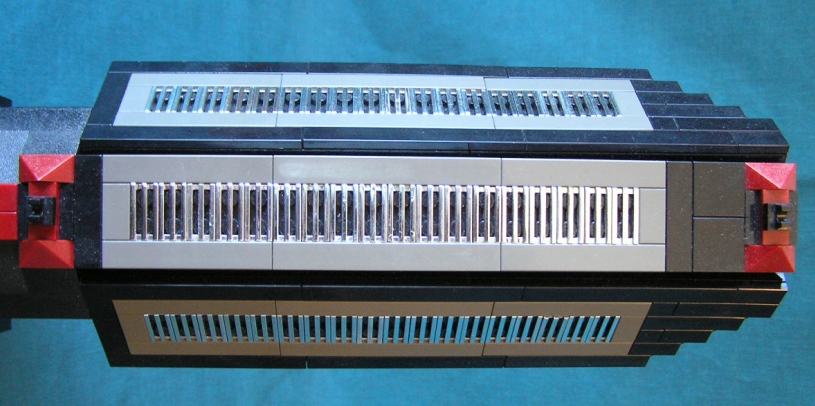
The triangular faceting around the barrel looked especially nice from above, further highlighting the suggestion that the weapon is very powerful and needs LOTS of cooling!
Click here to see the fiberoptics in action!